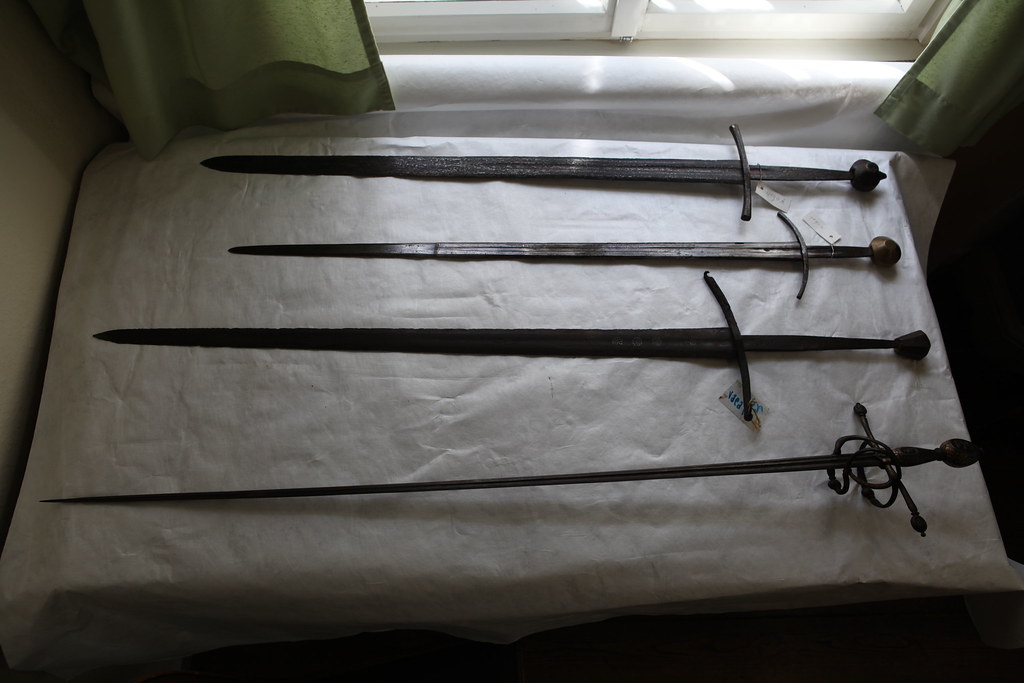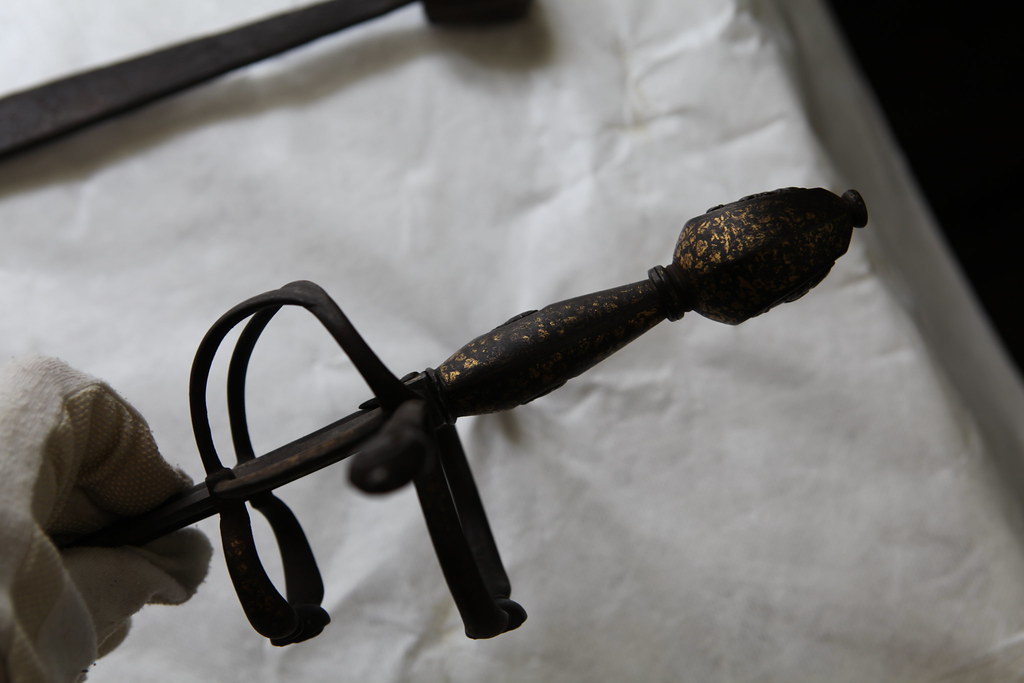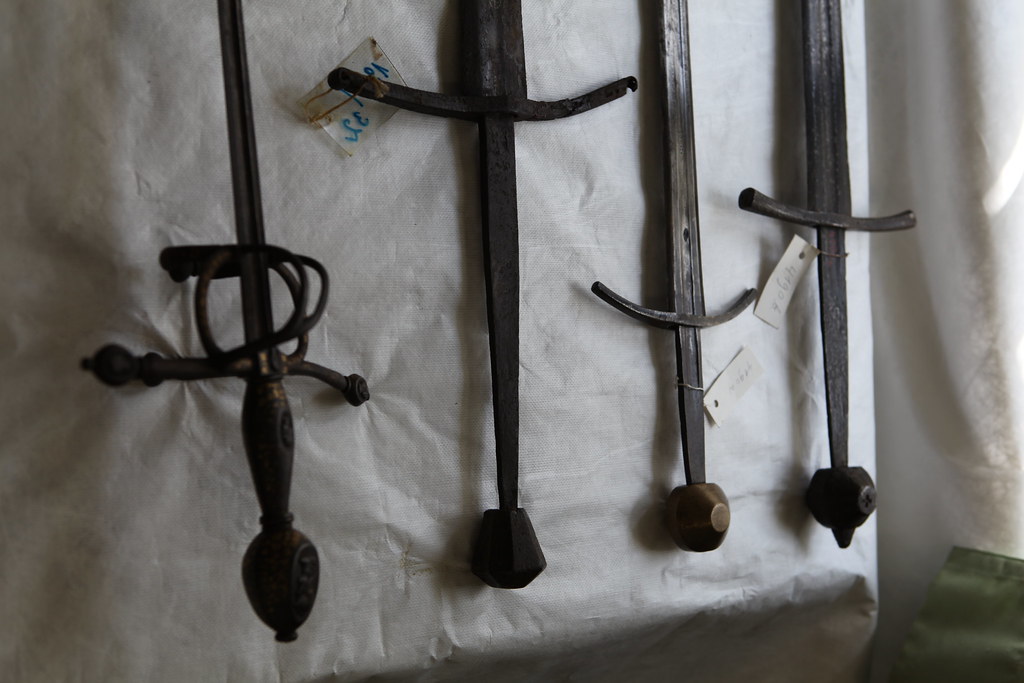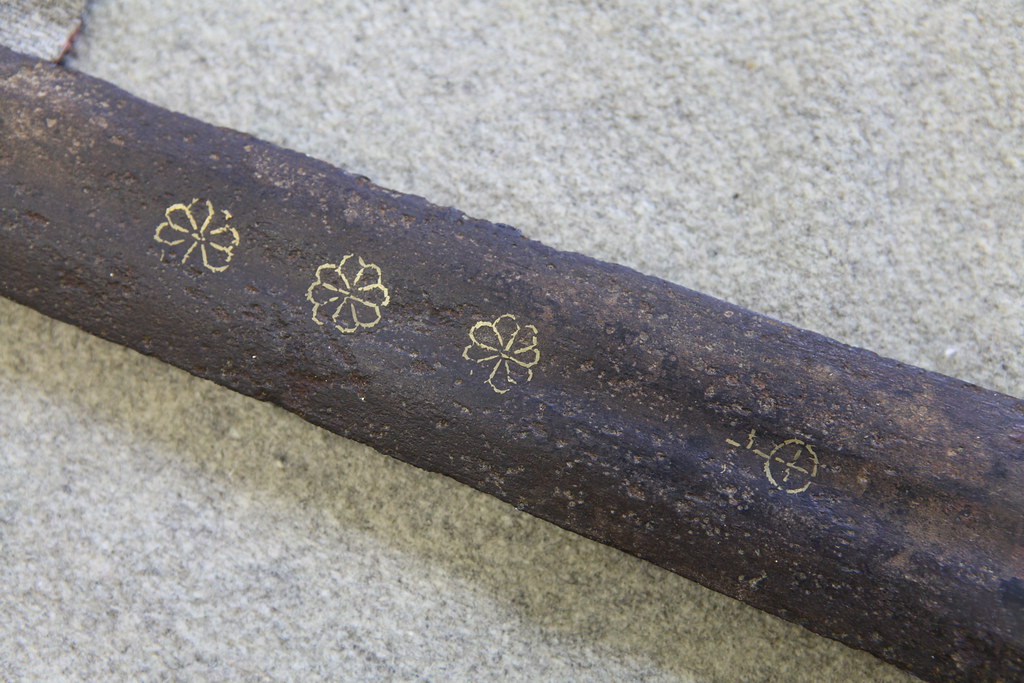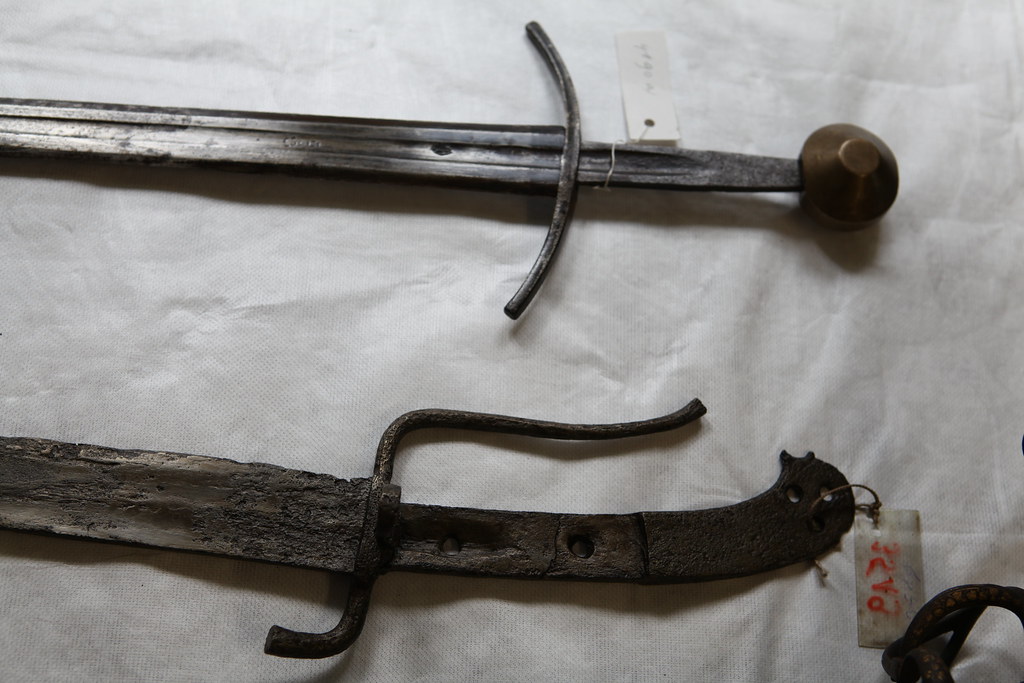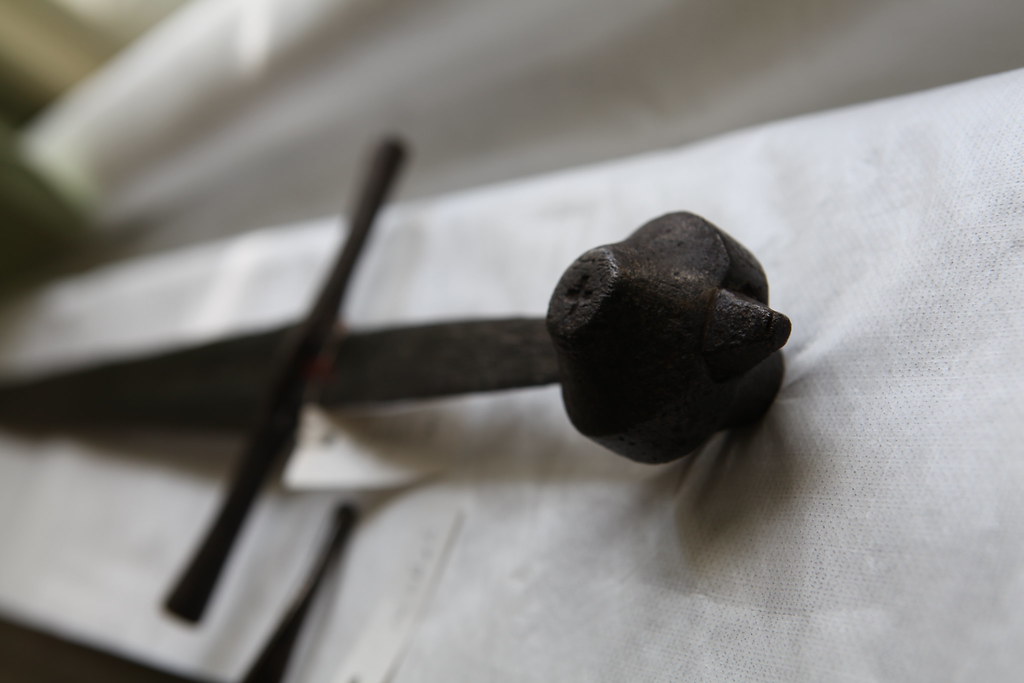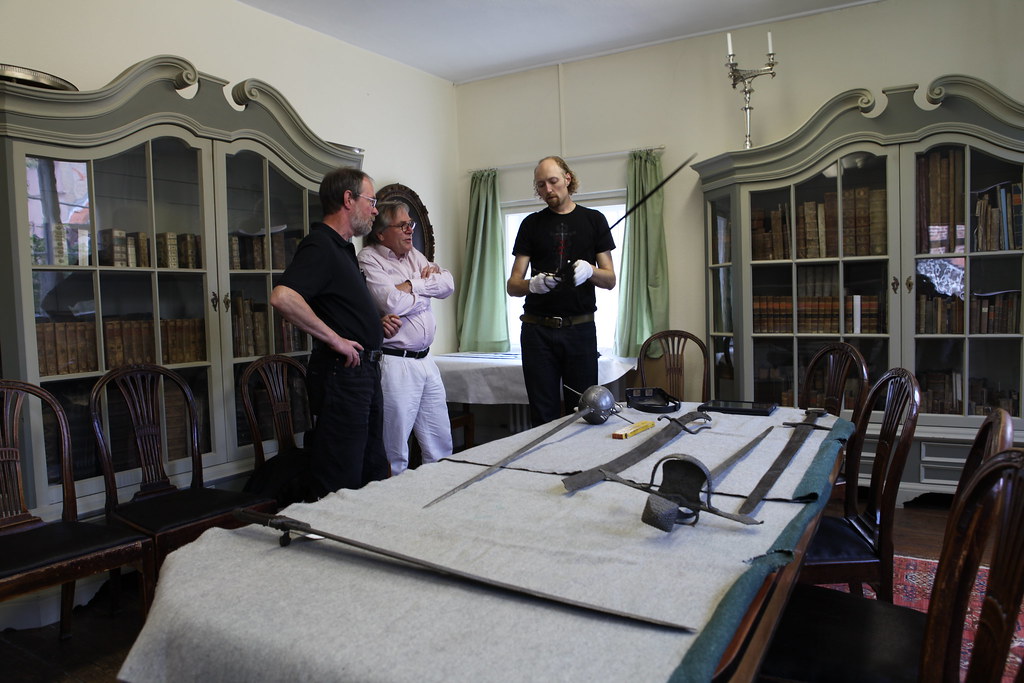Following my trip to the WWOC event outside Hannover, I headed north to Hamburgh to meet up with my good friend Roland Warzecha who hosted me for several days at his lovely country house outside of the city. On the first full day of my visit we headed to the medieval town of Lubeck known for its cathedrals, marzipan, and museums. Roland had arranged a private meeting for me at the St. Annen museum where I was to see a hand picked collection of antique swords set aside by the curator of their arms and armour collection. It was a great honour and an excellent opportunity to spend more time handling the true pieces on which our arts are based.
In the collection of swords were three rapiers, a long arming sword, two longswords, and 2 langes messers. (photos care of Roland Warzecha)
Getting the opportunity to handle historical weapons really increases your understanding and appreciation of historical fighting arts and I take the opportunity whenever i can. However you rarely know if the weapons you're handling are good or bad examples. Whether they were made for use or show and what the combative intention and necessities were for the maker and wielder.
This very strange rapier with a massive guard, welded plate over the rings, and huge pommel fit more into the bad example category from my experience.
I took the time to profile four of the weapons that I felt were notable in their construction and had the feeling of well made swords. I've included some pictures as well as my notes and measurement information below. I sadly was not able to weigh any of the weapons.
17th Century Rapier
- Gold enamelled furniture with roman head motif on pommel and quillon arms.
- Blade is double fullered with a diamond cross section
- The blade is very rigid with barely any flex.
- Distal taper
- Sharpened entire length of the blade
- Slight step down in width from the blade to the ricasso.
This sword feels very well balanced in spite of being fairly substantial. The handle and hilt sweepings are just right to accommodate a hand without being excessive. The wear patterns suggest extensive handling and use.
The blade was very thick and rigid (more than most historical rapiers I have handled). It would have been able to wound with a thrust even through fairly heavy padding or maille. The wielder may have wanted a heavier aesthetic to suit a more armoured attire, or they may have been expecting to face much heavier weapons. This sword would be ideal for the rapier vs spear techniques shown in Fabris, or to be taken against heavier cutting swords. The rigidity would certainly give the blade a lot of staying power and communicate more readily to its wielder the slightest pressure from the opponent.
Blade length: 106cm
Quillon length: 24.5cm
Point of percussion: 41cm
Guard depth: 7cm main ring to centerline - 5cm forward ring to centerline
Guard depth: 5.3 on sweepings from centerline
Sweeping width: 11cm
Blade thickness ahead of guard: 1cm exact (fuller ridge to ridge)
Blade thickness Mezza spada: 6mm
Blade thickness point: 5mm at 6cm from point
Handle length: 7.3cm
Pommel length: 6cm
14th century longsword
- Scent-stopper pommel.
- Long handle and curved quillons.
- Flower parkings on the fuller of the blade in gold.
This sword was very well balanced, even without its handle. It weighed between 3 and 4 pounds. It had a good heft to it without feeling overbalanced toward its blade. The very long handle (which you can see when compared to the other blades in the collection) made it quite easy to handle.
Blade length: 93.5cm
Handle length: 24cm
Pommel length: 4.5cm
Quillon length: 25cm
Point of percussion: 35.5
13-14th Century Arming Sword
- Curved quillions.
- Disc pommel in brass, barely tarnished.
- The entire blade is quite clean and has very little oxidation.
- There is a weld in the debole of the blade where a break was repaired. The metal is warped at this point.
This arming sword had quite a long blade when compared to its contemporaries. A recently visiting scholar suggested that perhaps it was intended to be used from horseback. It was superbly balanced and felt glorious to wield. Even without a handle you felt that it could immediately do service.
Blade length: 89cm
Handle length: 10.7
Pommel length: 4.5
Quillon length: 16.5
Approximate weight:
Point of percussion:26cm from point
Thickness at ricasso: 4.9mm
At mezza: 3mm
Near point: 2mm
13th Century Longsword
- Hand-and-a-half length handle.
- Pronounced peaning block, almost a spike protruding from the pommel.
Blade length: 88.2cm
Handle length: 18cm
Pommel length: 6cm to spike, 4.8 to before spike
Quillon length: 18.7cm
Approximate weight:
Point of percussion: 37.2cm
Thickness at ricasso: 3.5cm
At mezza spada: 3cm
At point: 2cm
Thank you to the curator and director of the museum Herr Jordan and Rodiek for their gracious welcome and conversation and of course to Roland for setting this all up.
Devon Boorman


